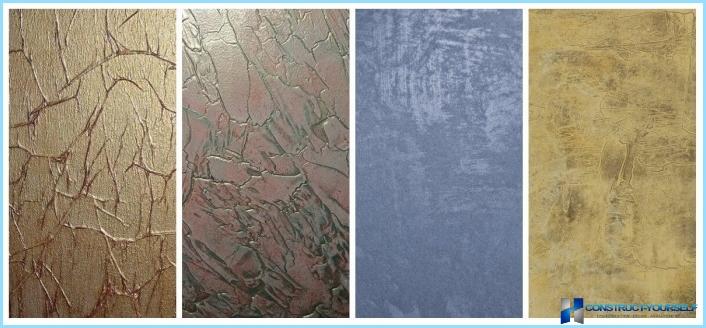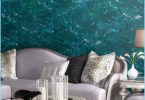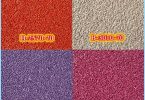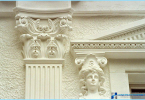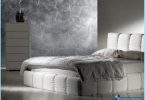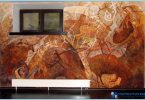One of the most important stages of interior work in the repair of a decorative finish. It performs several functions, including the protection of the surface of the wall and giving it sophistication. Thanks to a banal grey finish of the surface can be turned into a work of art. On the market you will find a variety of materials for decorative plaster, which differ in price, quality and features. One of the material options for the treatment of walls – decorative plaster silk. Its name speaks for itself – the material mimics the fabric known as silk. The pearlescent coating surface impresses with its play of light that can be observed under different viewing angles. Everything looks spectacular, rich and delicious. But this material is not cheap. Although, comparing the pros and cons, the costs will be justified.
Let’s take a closer look, what is this stuff, what are its positive and negative sides, as well as learn the technology of application of decorative silk plaster made from the suggested videos.
Silk plaster what is ↑
We all know how the product looks and what it’s meant. This material, which cover the wall to straighten it or decorating. As for the silk decorative plaster, it is applied on the prepared surface and performs a purely decorative function. But there is a caveat concerning its composition. You may be surprised, but the product is produced based on polyester, cellulose fibers, cotton fibers dyed with natural and artificial silk, and a variety of acrylic binder additives. The main characteristics of the material makes it the particles of silk. There is a certain regularity: the larger will be the silk fibers, the richer and more luxurious looks to the treated surface.
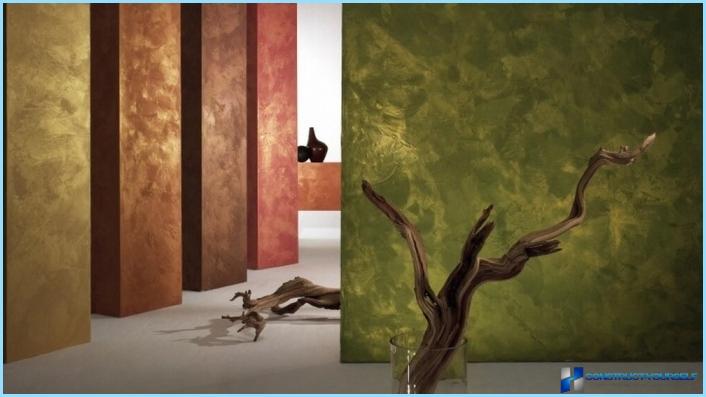
Due to this, the work is done much faster and material consumption will be small. Krupnopanelnogo solution on the wall more.
The presence of polyester yarn, makes silk plaster is very flexible and easy to use. And acrylic copolymers as the binder component, reinforce these characteristics. In addition, a small percentage of the masses are plasticizers, active substances, eliminates mold and fungus, dyes and other additives, which enhance the characteristics and quality of silk plaster. It is noteworthy that some fillers give the picture that you have created, translucency. At different angles it will look different.
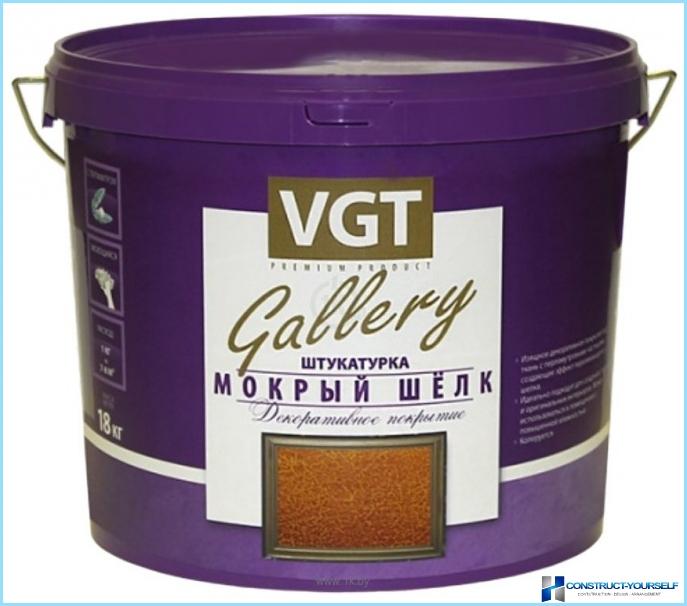
Work by silk plaster is allowed in any premises:
- living rooms of apartments and houses;
- corridors;
- office space;
- educational and medical institutions.
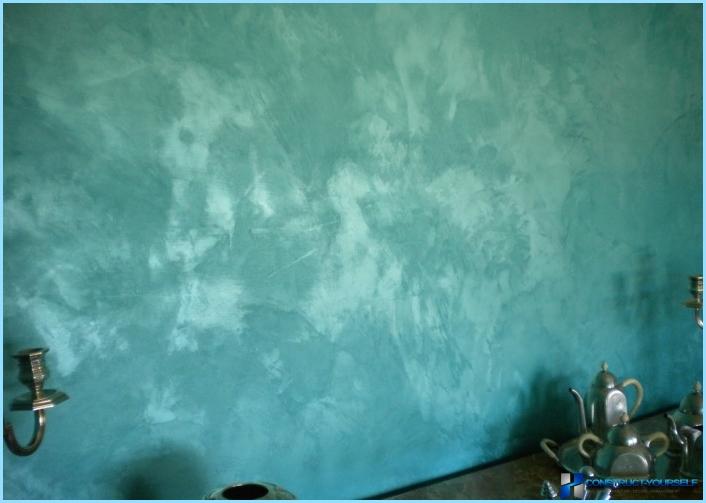
And the presence of a wide variety of colors and textures of silk plaster will enable you to realize any creative imagination and unusual design ideas. How does silk plaster on the surface, you can see from the following photos.
Advantages and disadvantages of the material ↑
Like any material, plaster has its positive and negative sides. To determine whether you need to use this material or not, required some analysis. What is it? You should know the advantages of the product as well as its disadvantages. Then compare them and think rational if such purchase for you. Let’s start with the positive sides of the material.
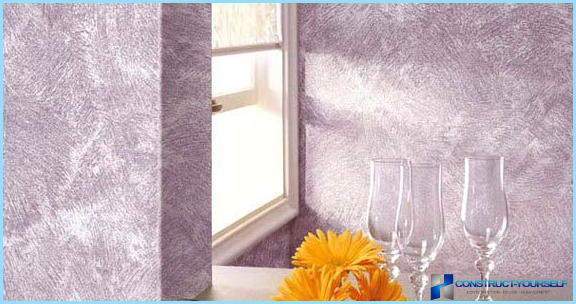
Dignity ↑
Quite a lot of them. The composition of the product makes it unique in its kind. Its characteristics blend is higher than other finishing materials. Advantages include:
- Ecological purity of the material. This is a very important factor, because in our time, ecology paid much attention. Due to the fact that the main component is a mixture of silk, natural or artificial, plaster is not harmful to people and the environment. You can rest easy, because your household, especially children, will be safe.
- Due to special additives in the composition, the surface is formed fungus and mold. The most common problem of all coatings is can be called the formation of such microorganisms. They have a negative impact on human health. Using silk mix, this problem you are not afraid.
- A good antistatic. Special components in the plaster allow it not to collect dust and not electrified.
- A high elasticity. Due to this, the material will not crumble, break or deform when the wall can form small cracks. Plaster will stretch with wall.
- Providing sound and thermal insulation of the room. The noise from outside or adjoining rooms will be muted, so that your stay goes perfect. And the insulating properties will make the room even warmer. In addition, the plaster wet silk good air permeability (breathing).
- The versatility of the material. No matter what the surface of applied plaster, as it is suitable for any surface.
- Practicality. The treated surface if necessary, you can restore and repair.
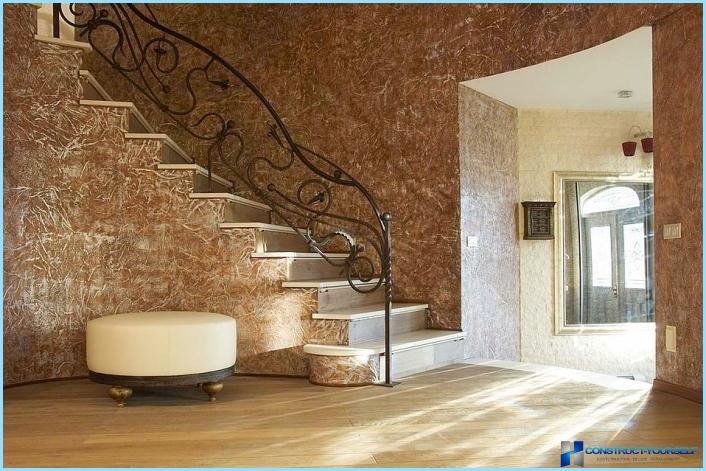
Deficiencies ↑
Despite all the positive aspects, shortcomings of the plaster is also missing. They are as follows:
- High cost. 1 mTwo at least you will have to pay 600 rubles. For comparison, some of the decorative plaster cost from 250 rubles per 1 mTwo.
- Will pull contaminants out of the wall.
- Able to absorb moisture and different odors, especially the ladies from tobacco products. It turns out that the use of silk plaster to finish the kitchen or rooms with high humidity is not recommended.
- The lack of resistance to wear. In those places, where ever people go, the material will be quickly wiped. This is especially true of corners and exposed surfaces. They needed further protect special pads at an early stage.
After weighing all the pros and cons, you can decide whether to work with you or not. We offer you to look decorative plaster wet silk in the photo.
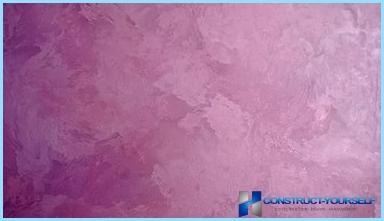
The process of applying a decorative blend ↑
So, if the decorative plaster silk you like and can afford, it remains only to buy the necessary amount of material and get to work on the plaster. Usually on the package of dry mix has all the required information to perform work on the plaster with his hands. Manual for the preparation of material follows:
- Grab a bowl or other container.
- Add water in the ratio, which is on the packaging.
- Pour back sequins that come and stir the contents.
- Then upload the plaster.
- Mix everything thoroughly.
All ready to go. In order to do everything correctly, view a special video, showing how to prepare the mixture.
Now let us see step by step instructions for applying silk plaster.
Step 1: primer ↑
It is important to prepare the ground so that the plaster is well stuck to the surface. To increase adhesion, use a special acrylic primer for decorative compositions. The primer or apply with a roller or brush. The entire surface of the walls should be covered.
Step 2: first layer ↑
You will need a trowel, medium or narrow, made of plastic. It need to scoop a small portion of silk plaster and apply to the surface of chaotic strokes. The gaps should be minimal.
Using different application techniques, you can make a different texture of the plaster. For example, the technique «droppe» is done by applying short, directed in different directions of the stroke. So you can get the tangle of curls and leaves. A reception «the moon» is achieved by applying radial movements. To make imitation silk wet, a layer of plaster applied very thinly, not more than 1 mm.
Step 3: apply a second layer ↑
You should know that in 1 layer of silk to the surface will fail. That’s why you need to apply a second coat using the same technique as with 1 layer. To simplify the task of creating a texture, you can use a variety of textured rollers who need to cause of.
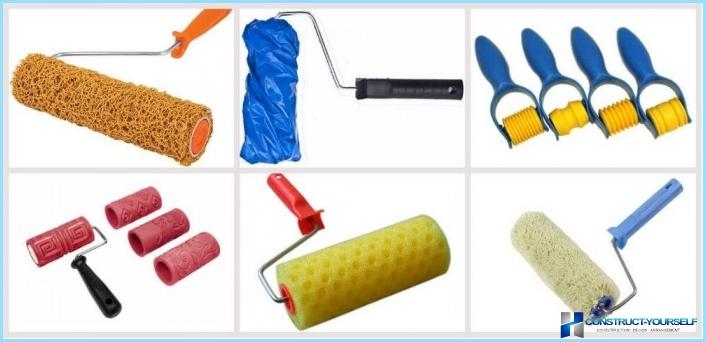
The photo shows what they are. With the help of this tool will work a variety of complex patterns, and creases caused «fabric».
How to perform a decorative plaster by wet silk learn from the following video.

